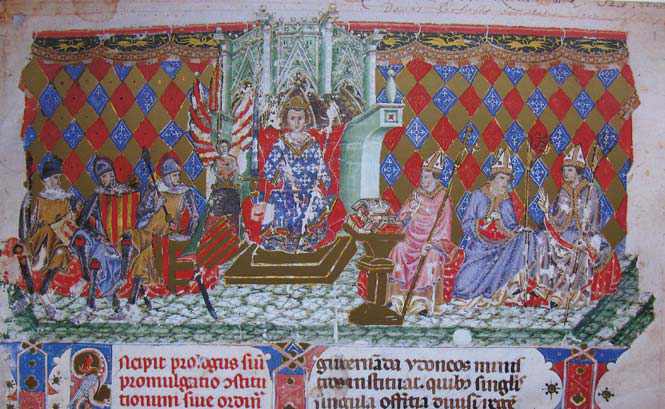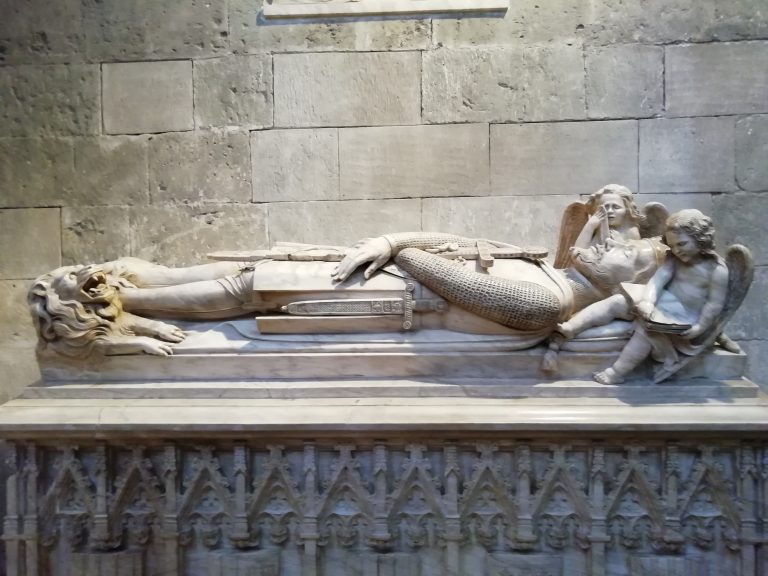Mallorcan history - Kings of Mallorca
The Kings of the Mallorca Independent Kingdom (1276 - 1349)
HISTORY OF THE KINGS OF MALLORCA
The kings of Mallorca. From Mallorca Premium Tours we always try to contribute something that can awaken your imagination, and curiosity or contrast the information from another point of view. Maybe something you already know or distracts us from the isolation that we have had to live in.
For this reason today we are going to tell about some episodes of Mallorca that happened between the 13th and 14th centuries. Did you know that in Mallorca there was an independent kingdom regarding the crown of Aragon? Have you ever been told that this dynasty’s first and last king is buried in the Cathedral of Mallorca? Do you know where the palace of the kings of Mallorca is?

The origin of the kingdom of Mallorca
Jaime I of Aragon known as The Conqueror conquered Mallorca on December 31, 1229. The island was united to the territories that it already had: Aragon, Catalonia, Roussillon and Montpellier.
Years later, in 1235, he conquered Ibiza and Formentera. The conquest of Menorca was different since Jaume I reached a pact with the Menorcan Muslims in 1231: a vassal pact initialled by the Capdepera Treaty, by which the Muslims of Menorca accepted the sovereignty of Jaume I. The definitive conquest on the part of the Christians was in 1287 under the orders of Alfons III of Aragon.
When the king died in 1276, the division of their territories between his two sons was reflected in the will: the eldest, Pedro III of Aragón, corresponds to the territories of Aragon, Catalonia and Valencia. The second Jaume II of Mallorca received the kingdom of Mallorca (Balearic Islands), Rossellón, Montpellier and two small territories (Omelades and Carlades).

The Mallorcan dynasty: The Kings
Jaume II of Mallorca (1276-1311)
He was the second son of Jaime I the Conqueror and who received the territories of the islands along with southern France.
On September 12, 1276, he was crowned king of Mallorca in the parish of Santa Eulàlia de la Ciutat de Mallorca (Palma) in front of the important people of Palma, juries and inhabitants. He was 33 years old.
Jaume II established the capital of his kingdom in the French city of Perpignan.
In the middle of the confrontation between the Crown of Aragon and the Capetos (dynasty of the kings of France), Jaume II was forced to declare himself a vassal of his brother, Pedro III el Grande Aragón in 1279 (Treaty of Perpignan). Later, in 1285, Pedro III invaded the kingdom of Mallorca. This was annexed to the crown of Aragon until 1295 when Jaume II el Justo, king of Aragon (son of Pedro III), agreed to return by the decision of Pope Bonifacio VIII all the islands to his uncle Jaume II of Mallorca.
He died on May 29, 1311, at the age of 68.
He is currently buried in the Trinity Chapel of the Cathedral of Mallorca. The resting figure of Jaume II appears dressed in courtly cut clothing and a quiet position, just as he died in 1311; the lion with the feet reflects this calm attitude, like the angels at the head.

Sanç I of Mallorca (1311 - 1324)
Known as the Pacific, he was the second son of Jaume II of Mallorca and Esclarmunda de Foix.
During his father’s reign, when he was 8 years old, he was taken prisoner along with his mother and brothers by his uncle Pere III d’Aragón, who attacked Perpignan and forced Jaume II to flee and leave his family behind.
Once Jaume II of Mallorca regained his kingdom, his eldest son and therefore heir, Jaume, renounced the succession in 1299 to become a Franciscan. Thus Sanç was finally recognized as heir in 1302, despite suffering from a chronic respiratory disease. For this reason, his father Jaume II ordered the construction of King Sanç’s palace in Valldemossa, which later became the Charterhouse of Valldemossa.
He married Maria of Naples, daughter of King Charles II of Naples, but it was a marriage childless.
The Mallorcan king tried from the first moment to get along well with his two cousins, both the King of Aragon and the King of France. Both desired the domains that made up the Mallorcan crown. That is why, despite Sanç’s peaceful disposition, tensions between the three monarchs were constant and he was barely able to maintain the integrity of their territories.
He died on September 4, 1324, at the Rosselló. His body was transferred to the Cathedral of Mallorca, although currently, his grave is in the Cathedral of San Juan Bautista in Perpignan.

Jaume III of Mallorca (1324 - 1349)
Born in Sicily in 1315, Jaume III is possibly the most controversial of the kings of Mallorca and his biography does not leave indifferent. He was known as Daredevil.
Historiography has accused him of having been a reckless, naive, foolish ruler … but at the same time, no one denies his courage, nobility and tenacity in defending his Crown. Thus becoming a worthy successor to the dynasty of the kings of Mallorca.
Son of Fernando de Mallorca (son of Jaume II of Mallorca and brother of Sanç) and Isabel de Sabran, Jaume came to the throne at the age of 9, so a regency council took over the kingdom’s government during his minority. His reign was complicated and with the constant humiliation and pressure of Aragon to take the crown of Mallorca.
During his reign he was accused of minting money in Perpignan, thus breaking the feudal pacts that his ancestors had signed with the crown of Aragon. The lawsuit resulted in conflict and Pedro IV the Ceremonious de Aragón conquered Mallorca in 1343 without a fight since most of the population and merchants did not support Jaume III.
Jaume fled and took refuge in Montpellier from where he tried to recover the islands. He decided to sell part of his southern French territories (which were part of the kingdom of Mallorca) to the King of France and with the money, he organized an entire army of mercenaries.
The Mallorcan king was returning to Mallorca! He landed in Pollença in October 1349 but failed to get the Majorcans to join his cause.
Finally, he was defeated and killed in the battle of Llucmajor on October 25, 1349, by Pedro IV of Aragón. Thus the kingdom of Mallorca was definitively incorporated into the crown of Aragon.
His son Jaume IV was captured and held hostage by Pedro IV and never reigned.
Currently, Jaume III is buried in the Trinidad Chapel of the Cathedral of Mallorca with Jaume II. The king appears dressed in a campaign dress, with a coat of arms, and with an exalted position; the lion of the feet also represents a fighting attitude, as corresponds to the violent death of the last king of Mallorca; angels are also elements that remember their sad ending as they appear crying.

Our walking tours in Palma de Mallorca
If you want to feel the old town of Palma, walk through the streets and alleys and find hidden places …
If you want to learn more about our history, kings, legends, plots, …
If you want to discover charming villages around Mallorca, such as Valldemossa, Deià and Sóller in the Serra de Tramuntana, or Artà in the eastern part of Mallorca.
Or if you want to personalise your own experience or if you are looking for something fun and interactive in group, company, family etc. …
It’s easy! just enter our web and contact us!
If you cannot go to one of our private tours, we also recommend another local company of reference on the island called Mallorca Free Tour and they work with the Free Tour system.
Follow us
